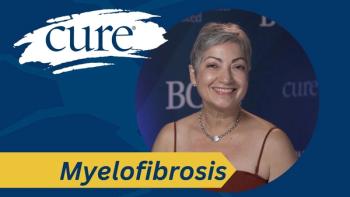
Zejula Maintenance Decreases Progression, Death Risk in Ovarian Cancer
Frontline Zejula maintenance therapy decreased the risk of disease progression or death in patients with newly diagnosed ovarian cancer.
Upfront maintenance therapy with Zejula (niraparib) decreased the risk of death or disease progression for patients with newly diagnosed ovarian cancer, according to findings from the phase 3 PRIME study that were recently published in the journal, JAMA Oncology.
READ MORE:
Maintenance therapy is given after the main treatment to prevent the cancer from growing or coming back. PARP inhibitors such as Zejula — which work by blocking the PARP enzyme on cancer cells, limiting their ability to repair damaged DNA, and eventually causing them to die — have become increasingly popular in the maintenance setting for ovarian cancer.
The PRIME trial, which was conducted in China, compared Zejula to placebo as a first-line maintenance therapy in 384 patients with newly diagnosed ovarian cancer that was treated with a platinum-based chemotherapy and experienced a complete response (disappearance of cancer) or partial response (shrinkage of cancer). Patients who underwent a debulking surgery to remove the cancer were also included in the study.
Findings showed that Zejula prolonged the time patients livedwithout their disease getting worse (a statistic known as progression-free survival), and also reduced the risk of disease progression or death by 55%. The average progression-free survival for patients given Zejula was 24.8 months, compared to 8.3 months in patients given a placebo.
“Women with advanced ovarian cancer have a poor prognosis, with a global five-year survival rate of less than 50% and a recurrence rate of approximately 75%,” Dr. Rafael G. Amado, president, head of Global Oncology Research and Development at Zai Lab, said in a press release.
The PARP inhibitor improved outcomes, regardless of the patients’ residual disease or biomarker status. Progression-free survival for patients with a gBRCA mutation was not reached (meaning that not enough patients died/experienced disease progression to calculate an average) in the Zejula group, and was 10.8 months for patients with a gBRCA given a placebo. Among patients who had an optimal debulking surgery, there was no visible cancer remaining, and the progression-free survival was 24.8 months and 8.3 months in the Zejula and placebo groups, respectively. Finally, in patients with suboptimal debulking, average progression-free survival was 16.5 months and 8.3 months.
“The positive results from the PRIME study, which show a substantial reduction in risk of disease progression or death with Zejula maintenance, offer insights into the potential to delay the progression of this devastating disease in a broad group of patients. We look forward to continuing to work with our partners to improve outcomes for women living with ovarian cancer,” Amado said.
While moderate to severe (grade 3 or higher) side effects were more prevalent in the Zejula group than the placebo group (54.5% versus 17.8%, respectively), similar proportions of patients in each group stopped treatment due to side effects (6.7% versus 5.4%).
“The complexity of ovarian cancer demands multiple, innovative treatment options,” said lead author Dr. Lingying Wu, director of the Department of Gynecologic Oncology at the National Clinical Research Center for Cancer, in the press release. “These data from the PRIME study prospectively demonstrate that an ISD of 200 or 300 mg of ZEJULA based on baseline bodyweight and platelet count can bring significant benefit to patients with an improved safety and tolerability profile of ZEJULA compared to a fixed 300 mg starting dose in previous studies ….”
For more news on cancer updates, research and education, don’t forget to




